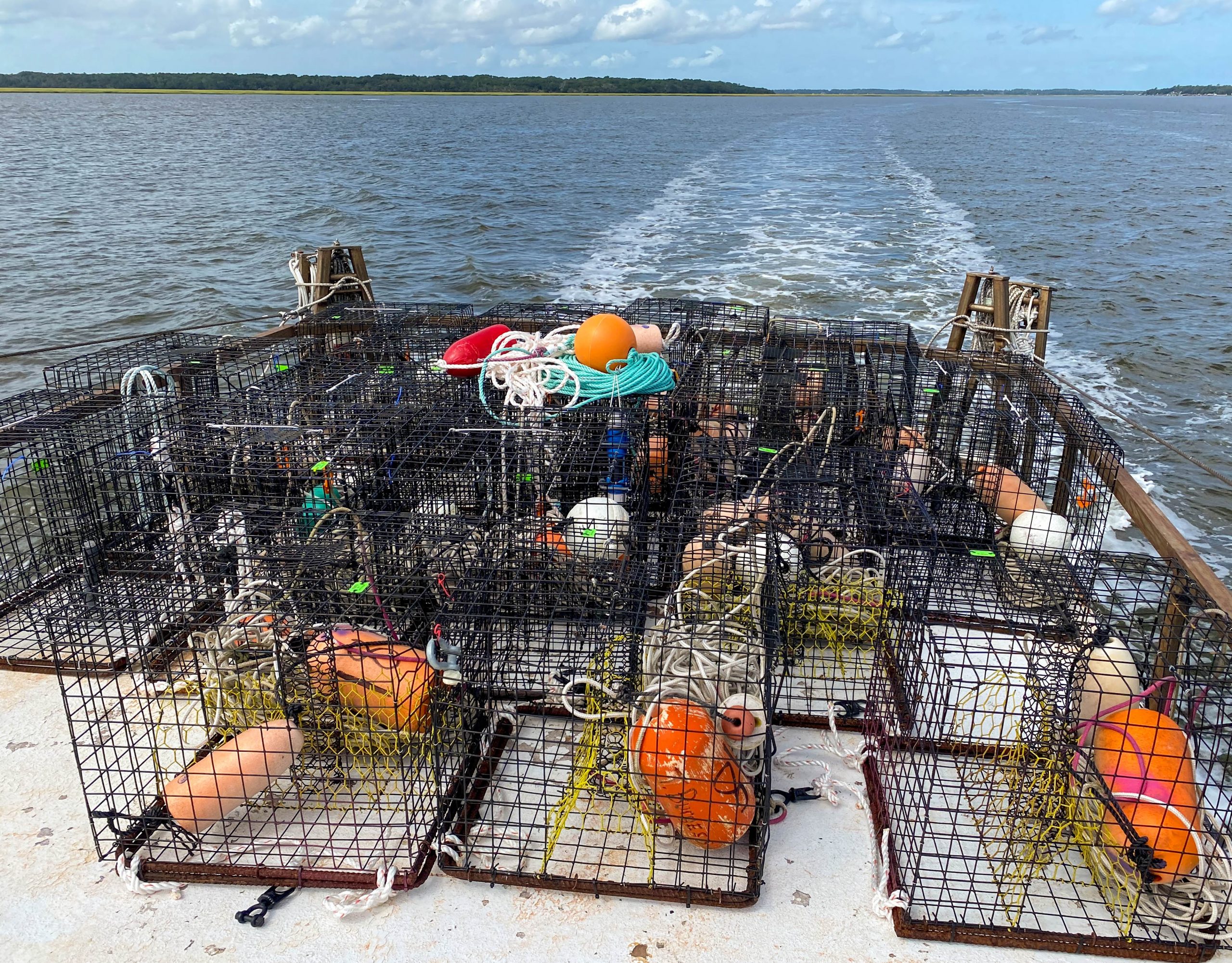UGA Marine Extension and Georgia Sea Grant is working with commercial fishermen to test advanced gear that could expand their catch while protecting the endangered North Atlantic right whale.
The ropeless fishing gear would allow boats easier access to black sea bass, which are caught using pots that are lowered to the ocean floor with vertical fishing lines connected to floats that sit on top of the water. Fishermen set those pots for a period of time before retrieving the pots and lines at the end of each trip.
Currently, from November to April the fishing boats have to go about 30 miles offshore to set their pots in order to avoid the right whales that migrate south during the winter to calve. That makes the trip more expensive and more dangerous.
“The use of ropeless gear could potentially remove nearly all entanglement risks to the whales and other marine animals,” says Bryan Fluech, associate director of extension at UGA Marine Extension and Georgia Sea Grant.
From New England to Florida, researchers and fishermen are exploring ways to adapt their gear to spare the right whales. The National Oceanic and Atmospheric Administration (NOAA) fisheries estimates that 85% of right whales have become entangled in fishing gear at least once. NOAA has identified two areas critical for right whales: off the coast of New England, where the whales forage for food in warmer months; and off the southeast coast from North Carolina to Florida, where the whales reproduce between November and April.

Fluech prepares a ropeless fishing device for deployment.
Fluech is collaborating with Kim Sawicki, project lead and doctoral student at the University of Massachusetts – Dartmouth. Sawicki serves as the president of Sustainable Seas Technology, Inc., a nonprofit dedicated to promoting the use of innovation and technology in the safe and sustainable harvest of seafood.
In the summer of 2020, the research team secured a permit from the National Marine Fisheries Service to test eight different ropeless gear systems with black sea bass pots off the coast of Georgia. It was the first time the ropeless gear had been tested in the South Atlantic.
“It’s nice to know that for this area, we’re really on the front end of this,” Fluech says.
Each gear type is rigged, deployed, and retrieved in a different way. Some devices use lines stored on spools or in bags or traps that sit on the ocean floor. Others have inflatable lift bags or buoys that float the pots to the surface. The devices are triggered by acoustic technology or timers that activate their release.
Fishermen use fishery-specific GPS software to locate the pots from above water.
“Normally you would just have a line and buoy in the water 24-7, but what we have to do is purposely tell these devices when to release the line and buoy and then we simply drive up to it, and keep fishing as normal,” Sawicki says.
Retrieving the gear takes less than two minutes and the fishing vessels stay within 20-30 feet of the line and traps during the retrieval process, leaving little opportunity for the whales to become entangled, a problem that has nearly eliminated the right whale. Only about 360 remain in existence in the wild, according to NOAA.
Fluech and Sawicki tested the devices alongside local fishermen, who provided boats and crew for the field experiments. This relationship has been the key to determining the practicality of the gear.
“Is it time effective? How long will it take for the average fisher to learn to use these gears?” Sawicki says. “We wanted to look at all of the issues surrounding the use of this gear through this very particular fishery.”
Throughout the testing period, the research team leaned on commercial fishermen for their institutional knowledge and feedback.
“The project, it holds merit in my eyes,” says Bill Nutt, a fisherman from Deland, Florida, who recently got back into commercial fishing after a 20-year hiatus. Nutt volunteered his time for the project, working as a mate on one of the fishing vessels the team used to conduct field studies.
“You definitely don’t want to endanger the whales, but you’ve got to make a living, so the devices have to be cost effective,” he says. “If there’s something you can do, you should do it.”
Next steps for the project team include reporting their findings to NOAA Fisheries and the South Atlantic Fishery Management Council early this year, and hopefully obtaining funds for additional trials and research.
“We hope this pilot study will serve as a catalyst for more formalized research into the application of this gear as an approved gear that would ultimately allow these fishermen to fish in areas that are currently restricted,” Fluech says. “At the end of the day if we can show that this gear is efficient and these guys can still catch fish and protect the whales, that might be incentive to grow the fishery and still meet conservation goals.”
Writer: Emily Kenworthy, 912-598-2348 ext. 107, ekenworthy@uga.edu
Contact: Bryan Fluech, 912-264-7269, fluech@uga.edu

